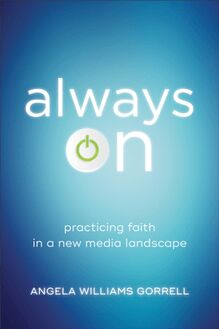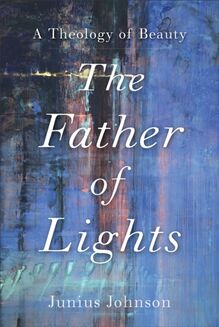End of Youth Ministry? (Theology for the Life of the World) , livre ebook
170
pages
English
Ebooks
2020
Vous pourrez modifier la taille du texte de cet ouvrage
Obtenez un accès à la bibliothèque pour le consulter en ligne En savoir plus
Découvre YouScribe et accède à tout notre catalogue !
Découvre YouScribe et accède à tout notre catalogue !
170
pages
English
Ebooks
2020
Vous pourrez modifier la taille du texte de cet ouvrage
Obtenez un accès à la bibliothèque pour le consulter en ligne En savoir plus
Publié par
Date de parution
17 mars 2020
Nombre de lectures
0
EAN13
9781493420179
Langue
English
Poids de l'ouvrage
1 Mo
Publié par
Date de parution
17 mars 2020
EAN13
9781493420179
Langue
English
Poids de l'ouvrage
1 Mo
Cover
Endorsements
“Root has made a career out of challenging the youth ministry industry, but this is his most important youth ministry book to date. The end of youth ministry? Hardly. This is where it starts.”
— Kenda Creasy Dean , Princeton Theological Seminary; author of Almost Christian: What the Faith of Our Teenagers Is Telling the American Church and coauthor of Delighted: What Teenagers Are Teaching the Church about Joy
“Andy calls us back to the cross by inviting young people to identify with Christ’s death and thus experience ‘God’s action’ in their lives. Rather than busyness, silence and humility make way for gratitude, and genuine joy erupts.”
— Sharon Galgay Ketcham , Gordon College; author of Reciprocal Church
“Sometimes the riskiest questions we ask return us to the most basic ones. Andy’s quest to answer ‘What is youth ministry for?’ invites us to join his own journey of theological and self-reflection. This book dares us to reorient our youth ministry approaches away from cultivating happiness and toward Christ crucified.”
— Steven Argue , Fuller Theological Seminary
“There are nagging questions in youth ministry, many of which we hesitate to name out loud. ‘Does what I’m doing matter?’ ‘Is any of this making a difference?’ In The End of Youth Ministry? , Root manages to put his finger on these concerns and bring them into the light. He doesn’t just name these questions, he explores them at length and then returns them to the youth worker in such a way that the questions become gifts.”
— Amanda Hontz Drury , author of Saying Is Believing: The Necessity of Testimony in Adolescent Spiritual Development
“Root’s many books evince a learned and sustained engagement with some of the most important thinkers in biblical studies, theology, philosophy, social theory, and more. His latest work, The End of Youth Ministry? , is no different, though its methodology is refreshingly new.”
— Bryan C. Hollon , Malone University
Series Page
Jesus Christ is God come to dwell among humans, to be, to speak, and to act “for the life of the world” (John 6:51). Taking its mandate from the character and mission of God, Christian theology’s task is to discern, articulate, and commend visions of flourishing life in light of God’s self-revelation in Jesus Christ. The Theology for the Life of the World series features texts that do just that.
Human life is diverse and multifaceted, and so will be the books in this series. Some will focus on one specific aspect of life. Others will elaborate expansive visions of human persons, social life, or the world in relation to God. All will share the conviction that theology is vital to exploring the character of true life in diverse settings and orienting us toward it. No task is greater than for each of us and all of us together to discern and pursue the flourishing of all in God’s creation. These books are meant as a contribution to that task.
Title Page
Copyright Page
© 2020 by Andrew Root
Published by Baker Academic
a division of Baker Publishing Group
PO Box 6287, Grand Rapids, MI 49516-6287
www.bakeracademic.com
Ebook edition created 2020
All rights reserved. No part of this publication may be reproduced, stored in a retrieval system, or transmitted in any form or by any means—for example, electronic, photocopy, recording—without the prior written permission of the publisher. The only exception is brief quotations in printed reviews.
Library of Congress Cataloging-in-Publication Data is on file at the Library of Congress, Washington, DC.
ISBN 978-1-4934-2017-9
Unless otherwise indicated, Scripture quotations are from the Holy Bible, New International Version®. NIV®. Copyright © 1973, 1978, 1984, 2011 by Biblica, Inc.™ Used by permission of Zondervan. All rights reserved worldwide. www.zondervan.com. The “NIV” and “New International Version” are trademarks registered in the United States Patent and Trademark Office by Biblica, Inc.™
Scripture quotations labeled RSV are from the Revised Standard Version of the Bible, copyright 1946, 1952 [2nd edition, 1971] National Council of the Churches of Christ in the United States of America. Used by permission. All rights reserved worldwide.
Dedication
To Skip Masback:
In gratitude for your friendship and for a career of championing youth ministry
Contents
Cover i
Endorsements ii
Series Page iii
Title Page iv
Copyright Page v
Dedication vi
Warning for the Reader! (Read before Using) ix
Preface xi
1. Toward a Journey to Joy 1
LATE MARCH
2. Don’t Waste Your Life: Youth Ministry and the Good Life 5
SEPTEMBER
3. Are the Kids OK? Goods and Youth Ministry 19
SEPTEMBER
4. Three Sets of Parents: Things and Happiness Emerge 35
LATE OCTOBER
5. Identity, Part 1: A Dance Party, Demi Lovato, and the Internal Quest 51
LATE OCTOBER
6. Transformation in Youth Ministry 67
LATE MARCH
7. Identity, Part 2: Romance, Recognition, and Resentment 71
LATE OCTOBER
8. Happiness, Part 1: Powerball, Endgames, and Sheryl Crow versus Taylor Swift 93
FROM WINTER TO SPRING BREAK
9. When Goods Become the Good 109
LATE MARCH
10. Happiness, Part 2: Holiness, Virtue, and Luther’s Freak-Out 119
THE END OF SPRING BREAK
11. Joy and the Custodian: What Youth Ministry Is For 143
LATE MARCH
12. Borne Burdens: Youth Ministry and Stories of Joy 149
LATE MARCH
13. Open Takes and Closed Spins: Youth Ministry and Transcendence 171
LATE MARCH
14. An Identity Event: How Youth Ministry Affects Identity 181
MID-APRIL
15. Holding Vigil: Youth Ministry and Cruciform Practices 205
MAY
Conclusion: Friendship and DQ 219
MAY
Back Cover 226
Warning for the Reader! (Read before Using)
A s you pick up this book and page through it, a good question is, What is this? I’ll be the first to admit that it’s weird. I’ve written it in the first person, as a story that I, Andrew Root, am going through. And in a real way, I am. Writing this book has forced me to think in new ways, connecting new thoughts to my earlier projects. In no small way, this book is the outworking of the implications of my Faith Formation in a Secular Age . It even offers a vision for how I think attention to the good life and the practices of faith connect to place-sharing and the theology of the cross, both of which my earlier thoughts rest on so squarely.
That said, the story that unfolds below is a parable, a kind of thought experiment. The best way to say it is that this book is written in the spirit of the Christian philosopher Søren Kierkegaard. All of my works have more than a hint of Kierkegaardian influence. Like Kierkegaard, who Karl Barth called “the melancholy Dane,” I sometimes feel like I could be called a “melancholy Minnesotan.” Perhaps both Kierkegaard and I have spent far too much time in snowdrifts and bone-chilling winds to see the world in any other way than through the crucifixion. So with Kierkegaardian irony, you’ll be surprised to discover that this book is fundamentally about joy . It sketches out how I see joy as central to inistry, and how I see joy in the resurrection as essential to a theology of the cross.
But in this book I go further in my Kierkegaardian directions than I have before, taking on the Dane’s style, using stories that mix factual occurrences and made-up characters to articulate larger points about reality. For half a second I even thought of using a Kierkegaardian pseudonym (Crash Adams would have been cool), but I resisted the temptation. So instead I’m calling the protagonist of the tale ahead Andrew. The character Andrew is on a nine-month journey to figure out what youth ministry is for. Just as Kierkegaard’s two characters Judge Vilhelm and A in Either/Or serve as a way for the philosopher to push forward new ideas, so my characters do as well.
In homage to Kierkegaard I have nicknamed my sage youth worker J—which stands for Janna. But because she’s the creation of my own imagination (and the many conversations with youth workers I’ve learned from), I’ve called her J also because she is part of my own consciousness (my middle initial is J). In a sense, J is a real youth worker—I’ve met many like J across the globe—but the overall arc of her story is for the sake of the parable. As a matter of fact, almost everything in these pages happened, just not quite in the order or with the direct existential immediacy that is relayed here.
That said, I did interview some parents for this book. These interviews show up in the middle chapters. So while the whole of the book is a Kierkegaardian parable, it does draw directly from real conversations that inspired each of the stories of the parents I relay. I’ve changed their names and circumstances, both because I promised to and to fit the parable. So in the end these interviews are more illustrative than scientific, more like a screenwriter doing a drive-along than a sociologist or political scientist honing question protocols. I ask the reader to judge them on the merit of the cultural philosophical ideas they illustrate, rather than on the scientific precision they provide.
Let me offer one final word about the mechanics of the book: maybe I’ve watched too much TV and am too influenced by flashback techniques of storytelling in The Handmaid’s Tale , Westworld , or This Is Us , but I’ve decided to use flashbacks as well. Eventually, we get to the present and stay there for the second half of the book. It’s rare to read a theology and ministry book that is told as a storied parable, much less one that uses flashbacks. So enjoy!
Preface
I t’s never a good thing to be spotted crying on an airplane. In those tight confines, it’s best to be steady—neither too high nor too low. But I couldn’t help it. I’d just finished a beautiful and convicting film called The Florida Project , about a little girl named Moonee living in a dark shadow cast by Disney World. Moonee and her mother live on the throwaway material of the tourism giant, having nothing but the scraps of thos




